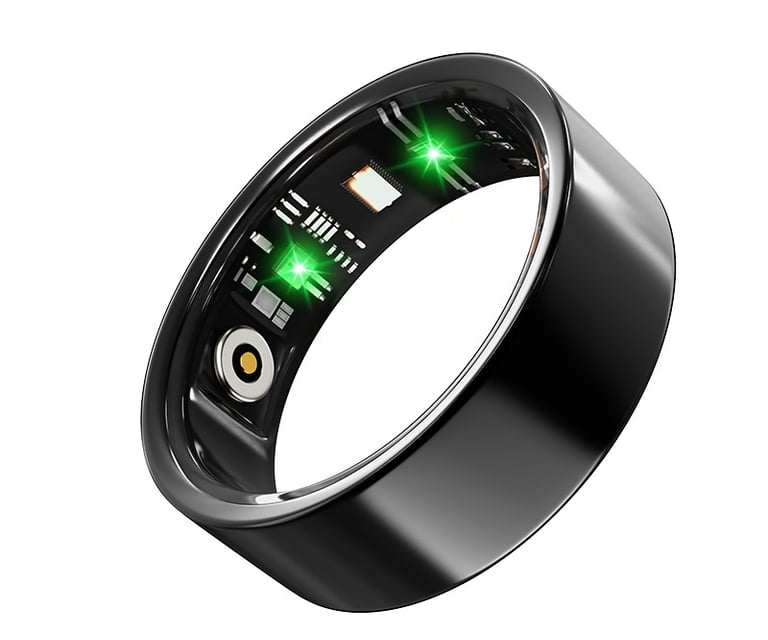Smart Ring Market Trends: How B2B Companies Can Seize Industry Opportunities?
7/9/20255 min read


Understanding the Smart Ring Market Landscape
The smart ring market has evolved significantly in recent years, driven by a growing consumer interest in wearable technology. As an innovative product at the intersection of fashion and functionality, smart rings have found their place in various sectors, including health monitoring, fitness tracking, and connectivity. This increasing adoption is largely attributed to advancements in technology, enabling features such as biometric monitoring, enhanced communication capabilities, and integrated smart functionalities, all within a slim and stylish design.
Key players in the smart ring market include prominent technology companies and startups that have pioneered development in this niche. Companies such as Oura Health, Motiv, and McLEAR have consistently introduced new offerings, improving user experience and expanding the functionalities of smart rings. This competitive landscape is characterized by continuous innovation, with significant investments being directed towards research and development to enhance the features and usability of these devices.
Consumer demand for wearables has fueled a rapid growth trajectory for smart rings, which have begun to reflect a shift in how individuals approach health and fitness. With applications ranging from tracking sleep patterns to monitoring heart rate and providing notifications, smart rings are increasingly seen as essential tools for maintaining wellness. The mobility of these devices enhances their appeal, as they can be easily integrated into daily life without the obtrusiveness often associated with larger wearables.
Market size predictions indicate a steady increase in the adoption of smart rings, with forecasts suggesting significant growth in the coming years. This projected expansion opens the door for B2B companies seeking to capitalize on the thriving market. By understanding the current landscape and consumer preferences, businesses can better position themselves to tap into the opportunities that the smart ring market presents.
Identifying Key Opportunities for B2B Engagement
The smart ring market presents numerous opportunities for B2B companies to engage with innovative technologies and expand their offerings. Manufacturers and software developers are pivotal players in this ecosystem, and forming strategic partnerships with these entities can significantly enhance a company's competitiveness. Manufacturers can provide the necessary hardware components, while software developers can create sophisticated applications that maximize the functionality of smart rings. By aligning with these partners, B2B firms can facilitate the integration of smart rings into their existing product lines, thereby increasing the value proposition of their offerings.
Another avenue for B2B engagement lies in creating tailor-made solutions that target specific industries. For example, in healthcare, smart rings equipped with health-monitoring features can support patient tracking and remote monitoring solutions. Fitness companies could leverage smart rings to offer personalized training insights, while corporate wellness programs may utilize smart rings to engage employees in health-related initiatives. Such targeted solutions not only address the unique needs of each sector but also position B2B companies as leaders in market innovation.
Moreover, B2B firms can differentiate themselves by developing specialized services or innovative offerings around smart rings. This could include providing data analytics services for health-related applications or customizing ring designs and features to suit different client needs. The unique capabilities of smart rings allow companies to create significant value, enhancing user experience and engagement. By identifying and nurturing these key opportunities in the smart ring market, B2B companies can carve out a niche, creating a competitive edge in an increasingly crowded landscape. As smart technology continues to evolve, the potential for B2B engagement in this sector will expand, underscoring the need for companies to stay attuned to ongoing trends and changes.
Navigating Challenges and Risks in the Smart Ring Market
The advancement of technology in the smart ring market has opened up new opportunities for B2B companies; however, it also introduces a variety of challenges and risks that must be navigated effectively. One of the primary hurdles is the technical complexity associated with the development of smart rings. These devices necessitate the integration of software and hardware, requiring significant expertise in both areas. Companies must ensure their products are not only functional but also user-friendly, prompting the need for ongoing research and development (R&D) investments to foster innovation and adaptability.
In addition to technical challenges, regulatory compliance is a pressing concern. Smart rings often collect personal data or health-related information, making it imperative for companies to remain vigilant regarding privacy regulations and health standards. The landscape of compliance can be intricate, varying across different regions and industries, which necessitates a keen awareness of applicable laws to avoid potential legal repercussions. B2B companies entering this market should allocate resources for legal consultations and compliance experts to ensure adherence to relevant regulations and standards.
Market competition is another significant risk; as the smart ring market expands, numerous players will emerge, leading to increased competition. To differentiate themselves, companies must adopt strategies focusing on innovation, quality, and customer service, strategically positioning their offerings in the marketplace. Strong branding and effective marketing strategies can help capture market share while establishing trust and reliability with consumers.
To mitigate the identified risks, B2B companies should prioritize strategic partnerships and collaborations, particularly with tech firms and regulatory bodies. Additionally, a proactive approach to market research will enable them to anticipate trends and shifts in consumer preferences, ensuring their products remain relevant and competitive. Successful navigation of the smart ring market requires a comprehensive understanding of these challenges alongside continuous adaptation and responsiveness to industry developments.
Strategic Approaches for Market Entry and Growth
To effectively enter and grow in the smart ring market, B2B companies must implement a multi-faceted strategy that begins with thorough market research. Understanding current trends, customer needs, and competitive dynamics is crucial for crafting a successful entry plan. This can involve analyzing market reports, conducting surveys, and employing focus groups to derive actionable insights. Such foundational research enables companies to identify gaps within the market that their products could effectively fill.
In addition to diligent market research, audience targeting plays a significant role in successfully entering the smart ring sector. Companies should segment their target audience based on demographics, behavior, and purchasing motivations. Tailoring marketing messages that resonate with these segments enhances the likelihood of engaging potential customers. For instance, tech-savvy individuals may be attracted to the latest RFID technology integrated into smart rings, while health-conscious consumers may prioritize features like fitness tracking and health monitoring.
Branding techniques are equally important in establishing a foothold in this burgeoning market. B2B companies should create a strong brand identity that reflects their values and mission. This involves crafting a compelling story that communicates the unique benefits of their smart rings, thus differentiating them from competitors. Effective branding not only fosters customer loyalty but also fosters trust, which is vital in a market driven by technological innovations.
Complementing market research and branding, effective marketing strategies are essential for reaching potential customers. Utilizing digital marketing channels, such as social media, online advertisements, and influencer partnerships, can elevate product visibility and drive demand. Additionally, building a strong value proposition helps frame the smart ring's features in a way that highlights their relevance and necessity to the consumer's lifestyle.
Lastly, customer feedback acts as a critical asset for ongoing product development. By actively soliciting and incorporating user experiences, B2B companies can iteratively refine their offerings to better meet market demands. This approach not only enhances product quality but also fosters a sense of community among users, reinforcing brand loyalty. Overall, these strategic approaches can effectively position B2B companies to capitalize on the expanding opportunities within the smart ring market.
